Australia So Much to See


Tennant Creek to Mataranka
Three Ways is on the junction of the

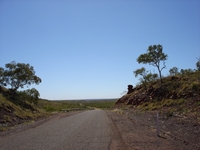
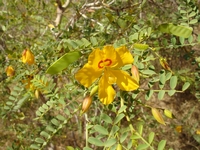
Attack Creek now has a large 24 hour rest area alongside the highway by the creek where John McDouall Stuart and his party were attacked
by local Aborigines whose intention was not to harm them but to scare them away from the waterhole as water is scarce in the arid
area. There is a memorial to Stuart at this site.
A kilometre north of Attack Creek rest area, a thirteen kilometre long stretch of the old highway has been retained in good condition
and passes a rocky pillar overhanging the road and known as Churchillís Head. Someone has placed a stick strategically to appear
like a cigar in Churchillís mouth. There are several places where the Highway has been re-aligned and some of these roads are
accessible and others now obscure or fenced off. Easy access ones can be suitable for stopping overnight.
A track runs
along the north east side of Morphett Creek which accesses remains of WWII buildings and an unmarked grave. Several dumps of
rusting fuel drums can be seen along the highway and would date back to War times.
Approaching Elliott, the large seasonal
At Newcastle Waters, little remains but the pastoral station. A roadside rest area has information boards. This area marks
the divide between the desert and spinifex scrublands to the south and the denser woodlands grass of the semi tropical areas to the
north. To the west is desert, and the black clay grasslands of the Barkly are to the east. Read more from the signage
on the Information Boards
The change in vegetation soon became evident as we entered woodlands rather than the light scrublands we had passed further south. By the time we stopped that night, we would be in dense forest and amongst large semi tropical trees.
'The
Dunmarra is another
It was to the south of Dunmarra that the north and south bound teams constructing the Overland Telegraph line met, completing the link between Australia and the rest of the world.
A four kilometre deviation from the present
Daly Waters Hotel claims to hold the
Larrimah is another small town that came about when an Army Depot and staging post was established here during WWII. Nearby
Railway Siding was known as Birdum. Part of the Birdum airfield runway now forms a street in town. A few kilometres south
of the town on the east side of the Highway is the No 45 Hospital Site. A short walk took us to a few concrete slabs and remnant
ruins of the former buildings. Read the story of life at the No 45 Hospital as recalled by one of the nurses
ALEXANDER FORREST REACHED THE OVERLAND TELEGRAPH LINE NEAR THIS POINT ON THE NIGHT OF AUGUST 31st 1879, AFTER HE AND HIS PARTY
HAD MADE AN EPIC JOURNEY FROM DE GREY ON THE
ERECTED BY THE ROYAL W.A. HISTORICAL SOCIETY AND KATHERINE HISTORICAL,
AUGUST 31st 1979.
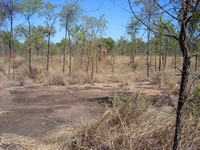
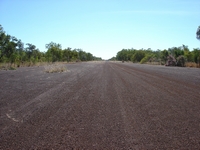
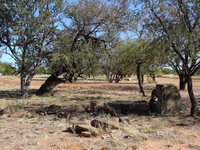
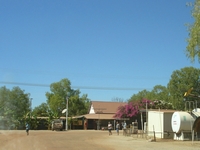
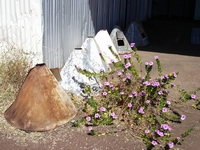
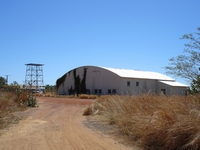
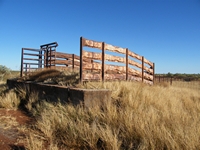
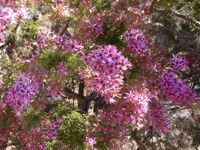
Closer to Larrimah and on the west side of the road, a track into the woodlands went to WWII relics, then onto the Birdum runway which
took us back into the town and onto the Highway. Very little remains in the town, and even the Roadhouse on the Highway had
literally fallen down, with fuel no longer available at Larrimah.
We were intrigued by the distinctive shaped second hand metal with identically placed holes in each one as used on this cattle loading
race. Fences in the area were also built using the same as posts. We soon worked out that they were a covering used over
railway sleepers.
Nine kilometres to the north of Larrimah is the Gorrie Airfield turnoff. There is a confusion of tracks heading in all directions
once into the bush, with some to relic sites and others just good bush camping opportunities. The two kilometre long Gorrie
Runway is one of the best preserved of the fifteen disused WWII runways in the
Bright pink flowering Turkey Bush shrubs were encroaching into the runway along the sides. An army depot site was nearby.
Crossing Warloch Ponds (Elsey Creek) the road was high above a wide green grassy floodplain. We were reaching the land known as The Never Never; the land Jeannie Gunn wrote of in her novel which gave the name, and into the land of lush tropical vegetation, wetlands and hot springs.
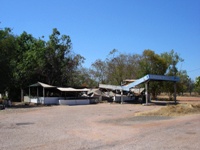
As we travel into tropical latitudes, we enjoy